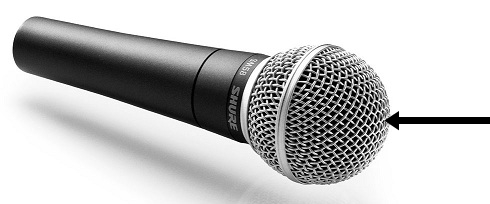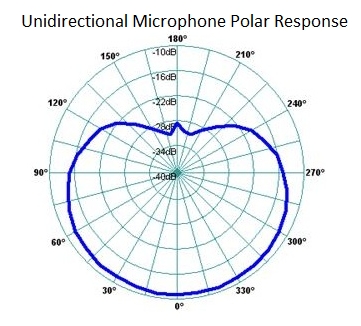What are Unidirectional Microphones?

Unidirectional Microphones are microphones that only pick up sound with high gain from a specific side or direction of the microphone. Thus, if a user is speaking into a unidirectional microphone, he must speak into correct side, normally called the voice side, of the microphone in order to get good gain on the recording. This is in contrast to omnidirectional microphones, which pick up sound equally from all directions of the microphone.

The polar plot image shows a typical polar plot response for a unidirectional microphone. The polar plot shows that the microphone has the highest gain when the sound source is directly in front of it, which is shown at the 0 degree reference point. At this 0 degree point, we can see the gain is 11dB. Now as the sound source is rotated so that it is at the sides, the gain of the microphone decreases because it is not as effective at picking up sounds from the sides. As the sound source gets rotated more to the sides toward the rear, the gain drops more and more. And finally from the rear, the microphone picks up the lowest gain, which in this case is about -28dB. This shows again that unidirectional microphones are most effective at picking up sounds from the front while it is much less effective at picking up sounds from the sides and rear.
Unidirectional microphones are used in applications where the target sound source to be recorded is directly in front of the microphone, and all other sounds in the room that may be on the sides and rear do not want to be recorded. An example of this is recording a professor's lecture in a classroom. In a scenario where only the lecture of the professor needs to be recorded without any noise that may be coming from the students behind, a unidirectional microphone has perfect application. Since unidirectional microphones pick up sound well from the front while attenuating all noises in the sides and rear, the high concentration of recording only from the professor talking allows more a cleaner recording than if omnidirectional microphones were used, which would pick up much greater noise, since it records from all sides of the microphone. Thus, unidirectional microphones have great application when a sound source can stay stationary in front of the microphone to record only that sound source and no other.
Related Resources
What is a Directional Microphone?
What are Omnidirectional Microphones?
What are Bidirectional Microphones?
What is a Cardioid Microphone?
What is a Shotgun Microphone?
What is a Microphone Array?
